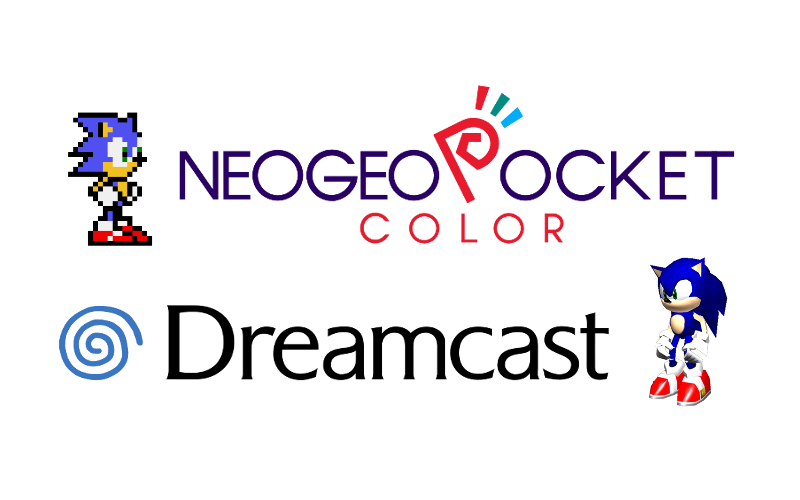A Tale of Two Consoles: The Neo Geo Pocket Colour and Sega Dreamcast
Few consoles hold a special place in my heart like the Neo Geo Pocket Colour and the Sega Dreamcast. Both launched in the late '90s, these consoles promised unique gaming experiences but were unfortunately discontinued within a year of each other. Despite their short-lived market presence, they have left an indelible mark on my gaming history.
The Rise and Fall of Two Icons
Neo Geo Pocket Colour
The Neo Geo Pocket Colour, released on March 16, 1999, in Japan and later that year in North America and Europe, was a 16-bit handheld console designed to compete with the Game Boy Color. Despite its initial success and a strong start with 14 launch titles, the console faced numerous challenges. The popularity of Nintendo's Pokémon franchise, the anticipation of the 32-bit Game Boy Advance, and SNK's financial troubles all contributed to its decline. By May 2000, the NGPC held only a 2% market share in the U.S. handheld market. In June 2000, following SNK's acquisition by Aruze, all operations outside Japan were discontinued, and by October 2001, SNK went out of business.
Metal Slug First Mission (Neo Geo Pocket Colour)
Sega Dreamcast
The Sega Dreamcast, launched on November 27, 1998, in Japan and in 1999 in other regions, was a 128-bit console that brought many innovations to the gaming world, including built-in modem support for online gaming. Despite its advanced features and critically acclaimed games, the Dreamcast struggled due to Sega's previous financial losses, intense competition from Sony's PlayStation 2, and a lack of third-party support. On January 31, 2001, Sega officially discontinued the Dreamcast, marking the end of their hardware production. By the end of its lifespan, the Dreamcast had sold 9.13 million units worldwide.
Crazy Taxi (Dreamcast)
Timeless Classics
The Sega Dreamcast is celebrated for its near-perfect or improved arcade ports. Titles like Power Stone, Soul Calibur, Crazy Taxi and House of the Dead 2 are fondly remembered.
Soul Calibur (Dreamcast)
Soul Calibur: This game was a significant improvement over its arcade version, offering enhanced graphics, smoother gameplay, and additional modes, making it one of the best fighting games of its time.
Crazy Taxi: Brought the thrill of arcade racing to home consoles with its fast-paced gameplay and vibrant cityscapes.
Sonic Adventure: Although not without its flaws, Sonic Adventure looked stunning, showcasing the Dreamcast's graphical capabilities and providing expansive levels and a deep storyline.
Marvel vs. Capcom 2: Known for its massive roster and fast-paced, chaotic fighting gameplay, this title became a staple in competitive fighting game communities.
Shenmue: An ambitious game that blended adventure, role-playing, and open-world elements, offering an immersive and detailed world that was revolutionary for its time.
House of the Dead 2: The game's immersive gameplay was enhanced by the use of lightguns, which were also excellent for Confidential Mission.
On the other hand, the Neo Geo Pocket Colour carved a niche with its impressive lineup of fighting games and adaptations of arcade classics.
SNK vs. Capcom: Match of the Millennium: Featured a robust roster and intricate combat mechanics.
King of Fighters R2 and Samurai Shodown: Delivered the arcade fighting experience in a portable format.
Metal Slug 1st Mission and 2nd Mission: Offered intense, side-scrolling action that fans of the franchise loved.
Many of my favourite franchises from the original Neo Geo were adapted for the NGPC, which made the console even more special to me.
King of Fighters R2 (Neo Geo Pocket Colour
Personal Favorites and Colourful Choices
For me, these two consoles were more than just gaming devices; they were gateways to countless adventures and memories. I spent the summer of 2000 glued to my Neo Geo Pocket Colour, relishing every moment with its compact yet captivating library. The console's intuitive control stick and vibrant color options – from the classic anthracite black to the vibrant camo blue – added a touch of personalisation and flair that made it even more special.
The Dreamcast had its own set of special editions, from Sega Sports to Hello Kitty. The only downside was the Dreamcast's official controller. Investing in an arcade stick was a necessity as I spent hours tirelessly trying to unlock Shin Akuma in Street Fighter 3: 2nd Impact.
Sonic Pocket Adventure (Neo Geo Pocket Colour)
Modern Tributes and Releases
Today, the legacy of the Neo Geo Pocket Colour lives on through collections available on modern systems, allowing new generations to experience these classic games. Titles like Pocket Rumble and Pocket Bravery draw inspiration from the Neo Geo Pocket's fighting game roots, keeping the spirit of the console alive.
The Dreamcast, too, continues to surprise and delight fans with new releases. Enthusiasts have managed to port Atomiswave games to the Dreamcast, bringing home experiences that were once exclusive to arcades. This dedication shows that the Dreamcast's impact on the gaming community remains strong.
A Unique Connection: The Link Cable
A fascinating connection between the Neo Geo Pocket Colour and the Sega Dreamcast was the innovative link cable that allowed the two consoles to communicate. This feature enabled players to unlock special content and transfer data between certain games, such as King of Fighters R-2 and SNK vs. Capcom: Match of the Millennium, adding an extra layer of interactivity and connectivity that was ahead of its time. Despite its potential, the link cable was not widely adopted, limiting its use to just a few titles.
Neo Geo Pocket Link Cable
Conclusion
While the Neo Geo Pocket Colour and the Sega Dreamcast may have had short lifespans, their influence endures. They offered unique experiences and innovative features that continue to inspire and entertain gamers today. Whether through nostalgic re-releases or fan-driven projects, these consoles prove that sometimes, the most memorable gaming experiences come from the most unexpected places.







